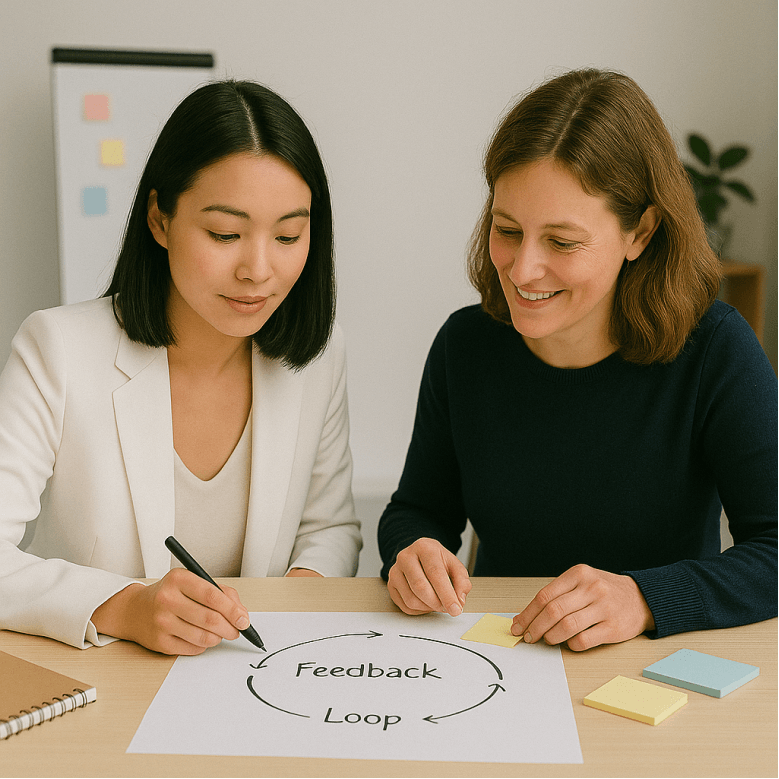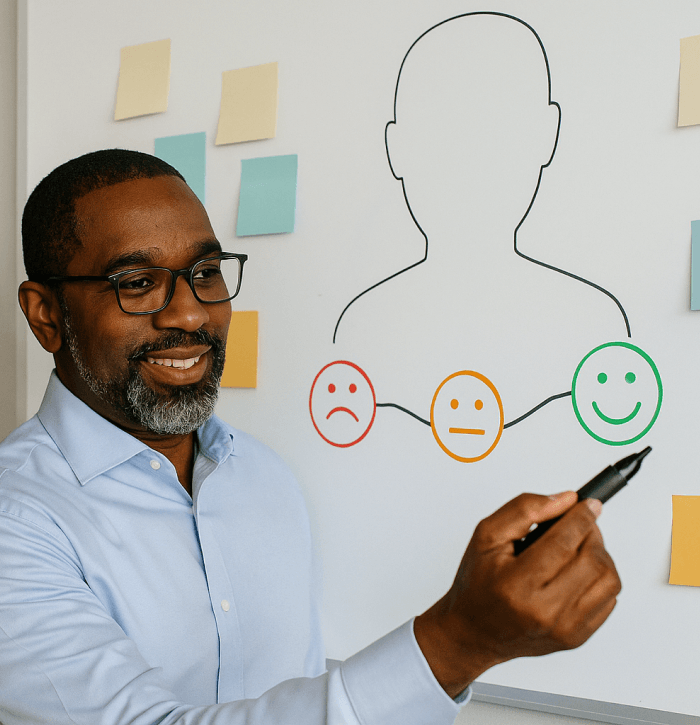Updated: January 24, 2024- 7 min read

What Does ‘Inclusive’ Mean in 2022?
Inclusive product design is an absolute must in 2022. If you’re planning to build a product at scale, you need to keep the door open for as many potential users as possible.
But our understanding of inclusive design has evolved over time, as product design itself has evolved. The inclusive design used to just mean breaking down physical barriers, such as allowing users to zoom in or make text larger.
Now, inclusive design means building products that anyone can feel comfortable using, regardless of their physical abilities, feelings, and cultural perspectives.
Inclusive design is disruptive, as products need to find innovative ways to allow for customization or to allow all users to access and enjoy the user experience. How do you create something unique enough to survive in a saturated market, whilst also being appealing to everyone? Surely that would lead to more products that all look and feel the same? That’s the Product Manager’s challenge to face!
Why Product Managers Should Care About Inclusivity and Accessibility
Inclusive product design is usually a subject left solely to UX designers. But design is becoming more and more important for successful products. A trend we foresaw in 2021 is that businesses that invest more in good design will see higher adoption and retention.
Customers are used to impeccable design, and the market is saturated with products that are inclusive, accessible, and aesthetically pleasing. Sub-par design just isn’t going to cut it in 2022.
It used to be that design was an afterthought. ‘Make the product, and then make it look nice’ was the old way of thinking. Now, design needs a seat at the product development table from the very start.
“You can’t be everything to everyone” is a well-worn phrase in the product world, but it shouldn’t be applied to accessibility/inclusivity. When we use this saying, we mean, ‘you can’t be the perfect product for everyone on earth.’ But you can be the best version of your product for your people.
“Does My Product Have To Be Inclusive?”
Imagine for a moment that instead of a digital product, you have a brick-and-mortar shop to manage instead. One day, while sitting at the counter, you see a person in a wheelchair struggle to get through the door without a ramp and a blind person not knowing their way around. You wouldn’t keep sitting at the counter and saying “meh, they’re probably fine.”
As a good business manager (and let’s face it, a good person) you’d try your best to make sure they receive the same level of service as someone with no disabilities.
As a Product Manager, you oversee the overall product development process, and you own what aspects of design the team focuses on. When a stakeholder asks for an aesthetic-only design feature, it’s your responsibility to say, “actually, we’re working on meeting our accessibility guidelines right now, maybe in V2.”
Check out: Product Managers: Here’s How To Make Your Designers Love You
You’re the voice of the customer in the development room, and you need to be the advocate for those who require inclusive design. User experience isn’t just for one type of user. You need to figure out how to make it more universal.
How to Build Inclusive Products:
A good designer designs products that perfectly balance being aesthetically pleasing and being readable. Your designers will constantly be weighing up how beautiful a product is and whether it’s actually usable for the majority of users. Some of the most common things designers will use are:
High contrast colors
Dark mode
Clear fonts
But creating an inclusive user experience goes beyond the surface design process. As we’ve said, it’s about much more than creating a usable UI for people with disabilities. There are some key things that you, as a Product Manager, can do to ensure that users face the fewest demographic and cultural barriers possible….
5. Research and Test
Both throughout development and after launch, you’ll be gathering data on how customers are using your product. While there are certain metrics you’ll be paying attention to, you should also be gathering data on how accessible and inclusive your product is.
Pay attention to the outliers in your tests. Let’s say out of 100 users participating in an A/B test, 5 found your new feature difficult to use. It might be easy to toss that aside and say ‘well, a 95% success rate is pretty good!’ But finding out why that 5% struggled with your new feature could be the key to reaching a more accessible design.
If you find out that most of that 5% have issues with their eyesight, then you’ll know that your product isn’t very helpful to that portion of users. That could be a missed opportunity at scale, especially as there are 285 million people globally who have visual impairments.
6. Build With Diverse Teams
We’ve said this a million times, but if the tech industry is going to build products that are for everyone, they need to be built by everyone. If everyone in your team comes from the same background with the same experiences, then you’re essentially building in an echo chamber. This doesn’t mean you can’t build an inclusive product, but you will be missing out on having different POVs in the room.
Passing over talented individuals because of an unknown bias is one of the worst hiring mistakes you can make. As the tech world moves into a more remote-first environment, you’ve got a great opportunity to widen your scope. Instead of seeking Harvard/Oxbridge graduates only, or focusing on hiring people who have worked at FAANG companies, look outside of the usual hiring bubbles, and you’ll find many hidden pockets of talent.
7. Localization and Cultural Considerations
Sometimes it’s not possible to make your app appealing to all possible cultures. For example, if you work in the CBD industry, there are many regions and countries where marijuana is still a huge taboo.
But unless you’re working in a controversial niche, you should be able to find some wiggle room to make your product as appealing as possible to the maximum number of customers. Sometimes it’s just about going for a neutral option. For example, if you have an app that has recipes, using pictures of steak on the home screen will be pretty off-putting to vegetarian users, as that’s not something they’ll appreciate seeing every time they open the app.
Localization is a big investment, but if you’re planning on scaling your product to millions of users, it’s the only way to achieve huge success.
Where Do I Go From Here?
Knowing how and when to work on the inclusivity of your product’s design depends on where you are in the life cycle. If you’re still in the early stages of development, such as discovery, you’re perfectly positioned for built-in inclusivity from the start.
If you’ve already launched your MVP, try to obtain data specifically about how inclusive your current design is, and use that data to iterate on your design and make informed improvements. That’s a better choice than simply slapping on a few bolder fonts and calling it a day! Users should never be an afterthought, and that includes users with different abilities and perspectives.
Updated: January 24, 2024





